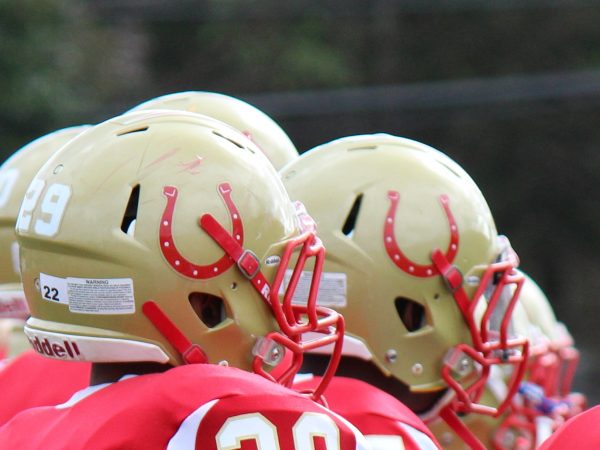Tackling Concussions Head-On

Photo Credit: Photojournalism
It is the most common type of injury in almost any contact sport, and, yet, the most deadly. One that can go completely unnoticed – no blood or bruises – and yet can entirely destroy the ability for one to meet the rudimentary mental demands of the world. For centuries, it was an injury completely unknown across the globe, an injury that would not not even cross the minds of players and coaches, in even the most physical of sports. Occurring over 3 million times each year, concussions are finally being treated with the seriousness that they deserve.
The brain is vital to anything and everything done every day. A concussion is, in essence, a brain injury, defined as a complex pathophysiological process that affects the brain; usually, it is induced by trauma to the head or neck area. The delicate nature of the brain leaves it vulnerable to even the smallest of hits, making it no surprise that these occur so often. For a single season in any given sport, there is roughly 1 in 15 athletes who endure a concussion. In sports such as football, this number can jump up to 3 out of 4 athletes. A study done on 91 former NFL players showed that 96% of them had signs of Chronic Traumatic Encephalopathy (CTE). The harm inflicted on players has caused some to commit suicide later in life, and all NFL players who have committed suicide are proven to have had CTE. With repetitive collisions, game after game, season after season, slowly but surely damage is bound to be inflicted upon the brain. However, the progress made by the NFL in recent years is just as astonishing. Since 2012, concussion percentages in the NFL have gone down from 75% to 30% as a result of the reforms that are now being implemented in all contact sports. Players now can only use their shoulders to hit and must make contact from the chest down. This has eliminated the majority of head to head contact and kept the players more secure and safe from the neck up. In addition, concussion specialists and medical timeouts have been added to ensure players who may have received concussions are given the proper attention. The strides made have eliminated many of the horrifying head injuries in the game, and this action has translated down to all levels of the game.
Following the NFL, high schools have begun to actualize the blueprint to reduce head injuries. The Half Hollow Hills School District prides itself on making the student-athletes aware of the concussion protocol. The symptoms (for example, dizziness, headaches, nausea, and lack of memory) and treatments are drilled into the heads of student-athletes from all authoritative sports coaches and assistants. The percentage of concussion injuries at the high school level is far below that of professionals, as players simply do not have the strength to cause intensive head injuries. However, the trauma is just as serious. While no physical wounds or scars are associated with this injury, it is almost impossible to diagnose a concussion without direct discussion with the player who has received it. The damage is mostly hidden, passing as seemingly harmless injury.
“The brain of a student athlete is still growing and obtaining knowledge,” said Mr. Pennacchio, Athletic Director of the Half Hollow Hills School District, “making it vital to follow the correct procedures once a concussion is diagnosed.” The brain trauma caused by concussions can hamper the brain’s ability to take in information, especially a young, developing brain. In addition, the likelihood of receiving a concussion increases with each concussion. After the first concussion, it is twice as likely that another will occur. During her freshman year on varsity soccer, Hills West student-athlete Nikki Buono suffered two concussions within one season.
“It was especially frustrating after the second concussion,” she said, “I wanted to get back on the field, but all I could do was wait for everything to heal.” This is true even for Hills West’s prestigious football team; players have sat out during games to heal the trauma in their brains, consequently leaving the team thin in the depth charts.
The constant collisions in all sports, high school and professional, make concussions inevitable. However, the new procedures and rules put in place to prevent present a glimmer of hope that one day, these traumatic injuries will no longer play such an impactful and harmful role in the world of sports.







